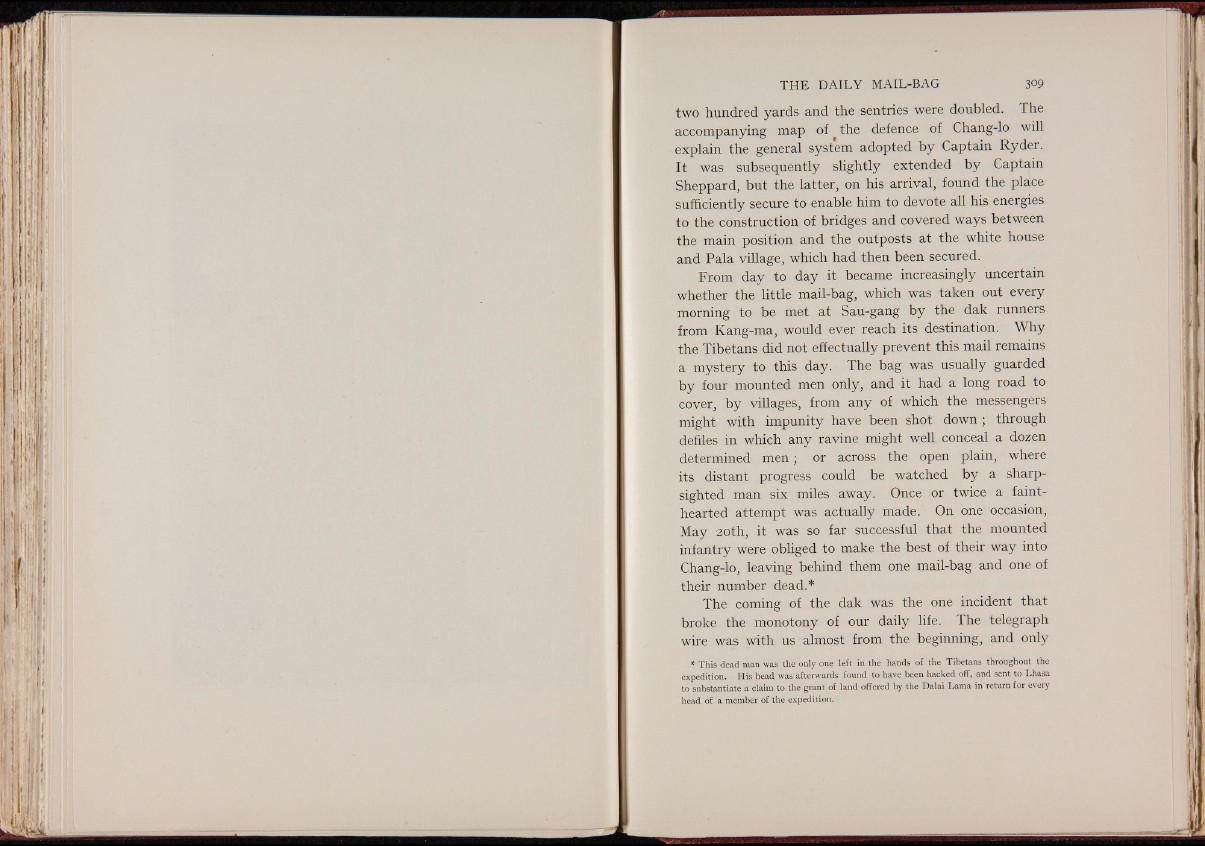
THE DAILY MAIL-BAG
two hundred yards and the sentries were doubled. The
accompanying map of the defence of Chang-lo will
explain the general system adopted by Captain Ryder.
It was subsequently slightly extended by Captain
Sheppard, but the latter, on his arrival, found the place
sufficiently secure to enable him to devote all his energies
to the construction of bridges and covered ways between
the main position and the outposts at the white house
and Pala village, which had then been secured.
From day to day it became increasingly uncertain
whether the little mail-bag, which was taken out every
morning to be met at Sau-gang by the dak runners
from Kang-ma, would ever reach its destination. Why
the Tibetans did not effectually prevent this mail remains
a mystery to this day. The bag was usually guarded
by four mounted men only, and it had a long road to
cover, by villages, from any of which the messengers
might with impunity have been shot down ; through
defiles in which any ravine might well conceal a dozen
determined men; or across the open plain, where
its distant progress could be watched by a sharp-
sighted man six miles away. Once or twice a fainthearted
attempt was actually made. On one occasion,
May 20th, it was so far successful that the mounted
infantry were obliged to make the best of their way into
Chang-lo, leaving behind them one mail-bag and one of
their number dead.*
The coming of the dak was the one incident that
broke the monotony of our daily life. The telegraph
wire was with us almost from the beginning, and only
* This dead man was the only one left in the hands of the Tibetans throughout the
expedition. His head was afterwards found to have been hacked off, and sent to Lhasa
to substantiate a claim to the grant of land offered by the Dalai Lama in return for every
head of a member of the expedition.